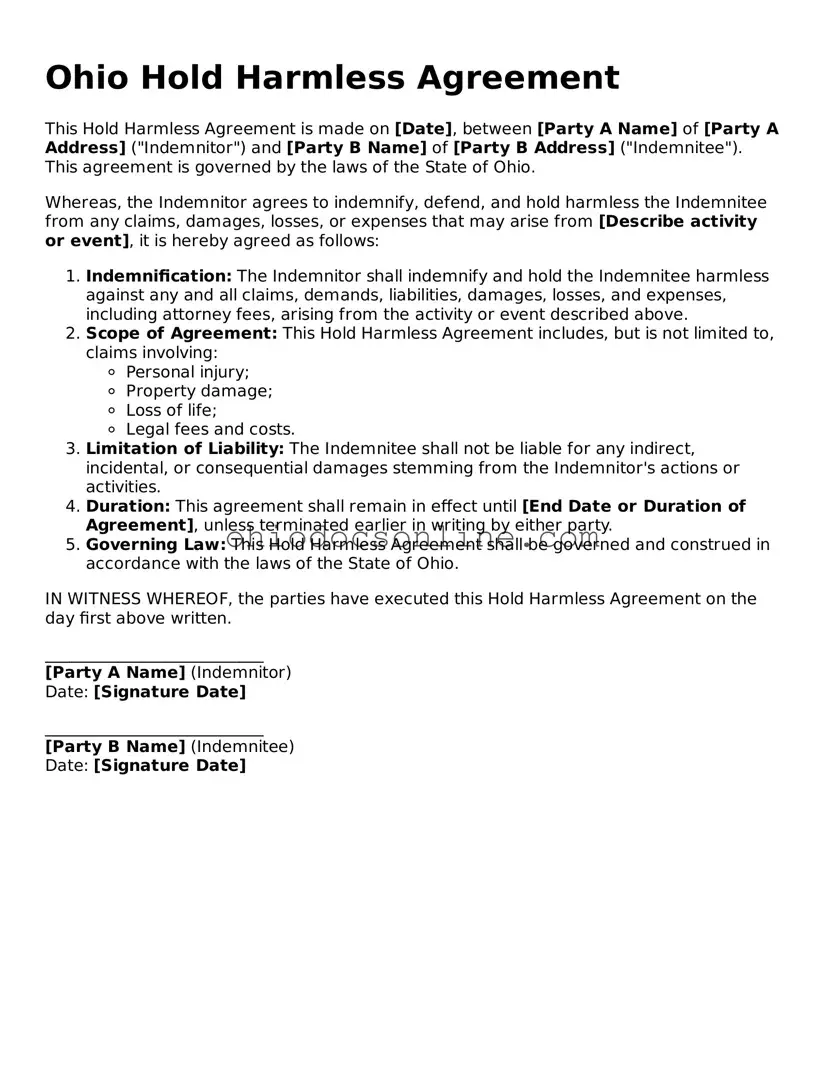Printable Hold Harmless Agreement Template for Ohio
The Ohio Hold Harmless Agreement is a legal document designed to protect one party from liability for certain risks or damages that may arise during an event or activity. By signing this form, individuals or organizations agree to assume responsibility for any potential claims, thereby safeguarding the other party from financial repercussions. Understanding this agreement is essential for anyone involved in activities that may pose risks, ensuring clarity and protection for all parties involved.
Open Editor
